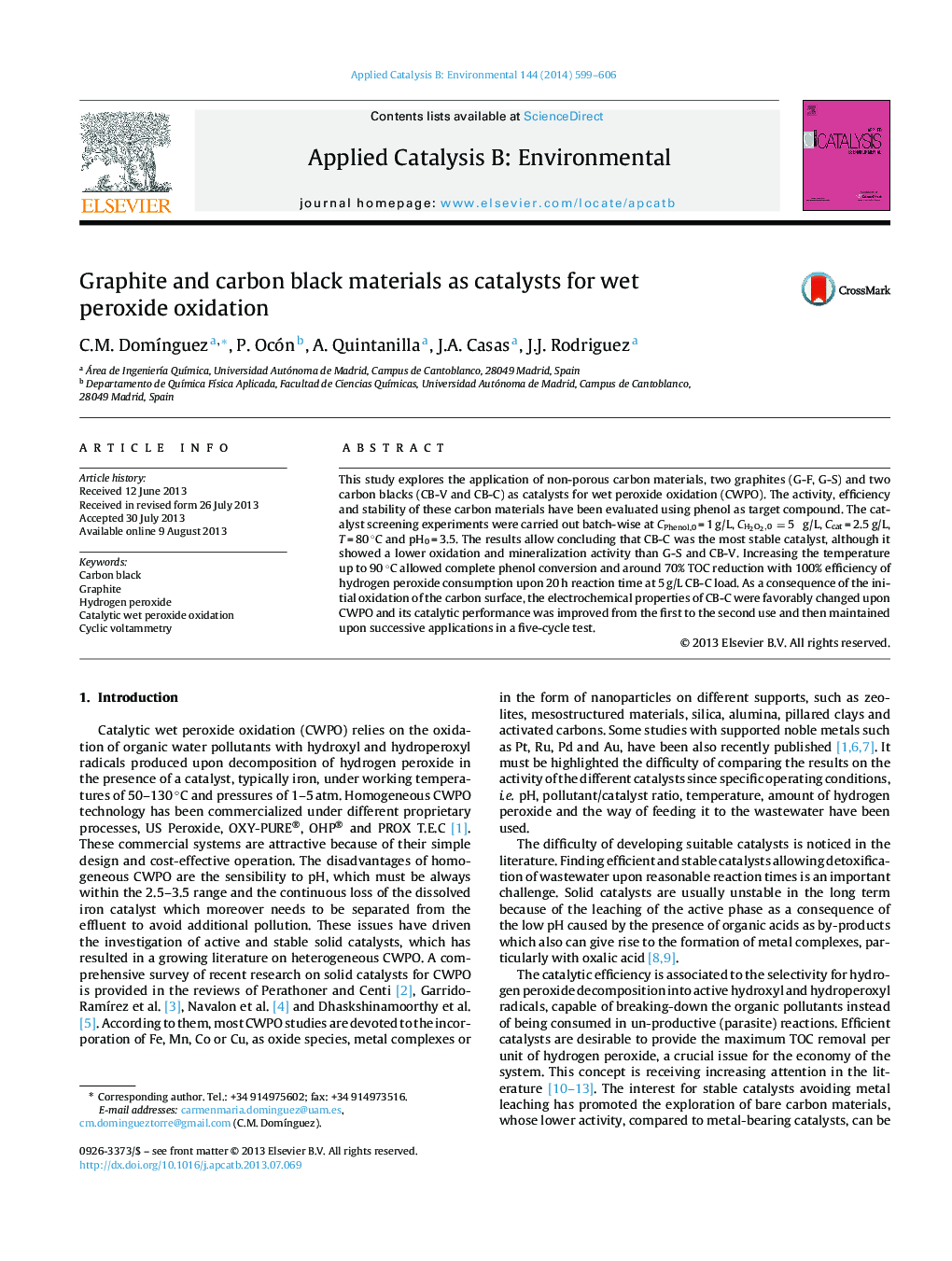| Article ID | Journal | Published Year | Pages | File Type |
|---|---|---|---|---|
| 45398 | Applied Catalysis B: Environmental | 2014 | 8 Pages |
•Graphites and carbon blacks have been tested in the CWPO of phenol (CPhenol,0 = 1 g/L, 80 °C).•Non-porous carbon blacks without mineral impurities are efficient and stable catalysts.•Low adsorption capacity prevents carbon deactivation by adsorbed oligomer by-products.•Total phenol conversion with 100% efficiency of H2O2 consumption was achieved in 20 h.
This study explores the application of non-porous carbon materials, two graphites (G-F, G-S) and two carbon blacks (CB-V and CB-C) as catalysts for wet peroxide oxidation (CWPO). The activity, efficiency and stability of these carbon materials have been evaluated using phenol as target compound. The catalyst screening experiments were carried out batch-wise at CPhenol,0 = 1 g/L, CH2O2,0=5 g/LCH2O2,0=5 g/L, Ccat = 2.5 g/L, T = 80 °C and pH0 = 3.5. The results allow concluding that CB-C was the most stable catalyst, although it showed a lower oxidation and mineralization activity than G-S and CB-V. Increasing the temperature up to 90 °C allowed complete phenol conversion and around 70% TOC reduction with 100% efficiency of hydrogen peroxide consumption upon 20 h reaction time at 5 g/L CB-C load. As a consequence of the initial oxidation of the carbon surface, the electrochemical properties of CB-C were favorably changed upon CWPO and its catalytic performance was improved from the first to the second use and then maintained upon successive applications in a five-cycle test.
Graphical abstractFigure optionsDownload full-size imageDownload as PowerPoint slide
